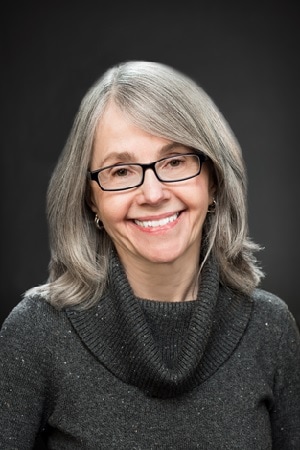Tackling Breast Cancer Through Prevention, Not Just Treatment
Posted on by By Mary White, ScD
By Mary White, ScD
CDC Division of Cancer Prevention and Control
Chief of the Epidemiology and Applied Research Branch
As a cancer epidemiologist, I spend a lot of time poring over research studies and cancer statistics. I read a lot about things that raise a woman’s chance of getting breast cancer, and many of those things apply to me.
Despite what I might want to believe, I understand that mammograms do not prevent breast cancer. Mammograms find spots in the breast that might be cancer, when lumps would be too small to feel, and signal that more tests are needed to rule out cancer. And when a cancer is found early, it’s easier to treat. But a mammogram is not like the flu vaccine—it does not stop a cancer from growing. Even if a routine mammogram shows no problem, breast cancer can develop before it’s time for the next mammogram. Real prevention—not getting cancer in the first place—involves tackling the combination of factors that cause breast cancer. That’s when things really get complicated.
Many Steps in the Path That Can Lead to Breast Cancer
The research shows that most breast cancers arise from a complex combination of genes, environmental exposures, and behaviors over many years, sometimes beginning in childhood. Although young women can get breast cancer, most women are in their sixties or seventies when breast cancer is first found. By those ages, women have had decades of different life experiences that contribute to their likelihood of receiving a breast cancer diagnosis.
No one can say for certain why a woman gets breast cancer or guarantee that a woman won’t. When looking across specific groups of women, studies have shown that some women are more likely than others to get breast cancer, all other things being equal. Some common factors that put women at higher risk for breast cancer are gaining weight after menopause, lack of physical activity, and drinking alcohol. Changes, called mutations, in the BRCA1 and BRCA2 genes contribute to a small proportion of breast cancers. Where you live can make a difference, too. Many factors have been linked to breast cancer, and with time, research may find even more.

A Lifetime Game of Bingo
It’s not one thing that causes breast cancer, it’s a combination. In some ways, the chance of getting breast cancer is like a game of bingo, with each of the many things that contribute to breast cancer, so-called risk factors, a square with a number on the card. The center square remains covered for anyone with breasts (men can get breast cancer, too). The card with squares and numbers is different for every woman, and the number of squares on the card can change. Some squares get covered early, such as having a family history of breast cancer or getting a period at a young age. Over a woman’s lifetime, more squares get covered, while others become uncovered by protective behaviors like breast feeding or strenuous physical activity. And there’s always an element of chance. In this game, the goal is to keep as many squares as possible uncovered, so no row, column, or diagonal has all the squares filled. The game can last an entire lifetime.
While research on the causes of breast cancer continues, actions can be taken based on what we know now to lower the risk of breast cancer, through personal choices and broader policy approaches. Because breast cancer results from a combination of factors, it may require a combination of actions by individuals, business and community leaders, and policy makers to lower the number of women who get breast cancer.
I recently wrote about an effort by Breast Cancer Prevention Partners, a nonprofit organization in California, to develop a plan to prevent breast cancer in that state, the first of its kind. The article was published in the International Journal of Environmental Research and Public Health. Paths to Prevention: The California Breast Cancer Primary Prevention Plan, to be issued in summer 2020, lists 23 things that can raise or lower a woman’s risk for breast cancer, and lays out a plan to address them. The plan builds on scientific research and community perspectives, and focuses on ways to create healthy communities, promote safer products, and make it easier for women to take care of their health. The prevention plan for California offers a promising new approach to tackle breast cancer as a disease to be prevented, not just found and treated.
I will keep getting my recommended mammograms, try to take better care of myself, get more exercise, and save the champagne cocktail for special occasions. And I am excited by the promise of healthier communities in the future, where women from all different backgrounds can enjoy more years of life, cancer-free.
3 comments on “Tackling Breast Cancer Through Prevention, Not Just Treatment”
Comments listed below are posted by individuals not associated with CDC, unless otherwise stated. These comments do not represent the official views of CDC, and CDC does not guarantee that any information posted by individuals on this site is correct, and disclaims any liability for any loss or damage resulting from reliance on any such information. Read more about our comment policy ».
I would like to see a comprehensive study of women’s use of underarm deodorant as a probable cause /contributing factor to breast cancer; with an analysis of the most common re-occurring chemical agents in the many products available. Women have been spreading/spraying these deodorant chemicals onto newly shaved underarm skin areas. This area has the largest set of lymph glands in the body that feed right into the breast tissue. The medical community knows that topical absorption of agents on newly shaved skin is higher than on unshaved skin. No warnings about chemical absorption exist on the deodorant labels. And I do not know of any studies completed or published about possible chemical absorption linked to breast cancer. This should be a study across all ages, races and countries. Many women in other countries either do not shave or do not use deodorant or both. It has been a personal hygiene habit for decades in the US to do both. Let’ see if there are any correlations please.
Thank you for your comment. You may be interested in this page from the National Cancer Institute: Antiperspirants/Deodorants and Breast Cancer.
I have had two pre cancers in the same breast in 8 years I am now almost 71. The pre cancers were measured/rated as a 00 and were contained in the milk duct, which My surgeon said that it was fully contained and would not go any where. is it really important to continue having lumpectomies?